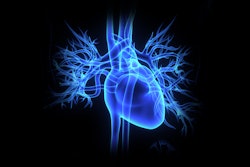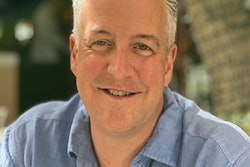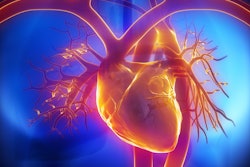VIENNA -- It's definitely possible to develop a successful cardiac imaging practice, according to a professional development presentation delivered February 28 at the ECR in Vienna.
It all comes down to a willingness to learn and to collaborate with colleagues across specialties, session chair and first presenter Dr. Matthias Gutberlet, PhD, of the University of Leipzig in Germany, told session attendees.
"Teamwork is the key to success," he said.
Gutberlet described how he came to cardiac imaging early in his medical career. At the time, there was little training for, say, cardiac MRI. But he persevered.
"Imaging was so important [for cardiac indications], that I decided to become a radiologist," he said. "Together with our radiographers, I learned to scan cardiac patients and learned special anatomy from pediatric cardiologists and pediatric cardiac surgeons."
Since Gutberlet was starting out, training for cardiac imaging has improved. He noted that in 2019, the European Society of Cardiology issued updated guidelines for diagnostic imaging of coronary artery disease (CAD), recommending noninvasive imaging (i.e., cardiac CT or MRI, nuclear cardiology, or echocardiology) for myocardial ischemia and the more invasive coronary CT angiography (CTA) for patients exhibiting symptoms of the disease and for whom obstructive CAD can't be excluded by clinical assessment alone.
He also cited a study published in April of last year in the New England Journal of Medicine that showed that invasive coronary angiography has a higher rate of major cardiovascular events during 3.5 years of follow-up compared with CT imaging (2.1% vs. 3%) and major procedure-related complications during initial management (0.5% vs. 1.9%) as well as an increase in the demand for noninvasive imaging for the diagnosis of CAD between 2013 and 2017 across all cardiac imaging modalities.
Gutberlet emphasized that obtaining certifications is part of succeeding in cardiac imaging. The European Association of Cardiovascular Imaging (EACVI) offers certifications for four imaging modalities, including CCT, cardiac CT, cardiac MRI, echocardiography, and nuclear cardiology; certifications for these modalities increased between 2003 and 2022, particularly for cardiac MRI. International organizations such as the Society of Cardiac Computed Tomography (SCCT) and the Society for Cardiac Magnetic Resonance (SCMR) also offer certifications.
"When I was in my [cardiac imaging learning] stage, there was no training in CMR or cardiac CT," he said. "However, [all of you] are in the lucky situation that different European [and international] societies now provide certifications for both CMR and cardiac CT."
How can radiologists become successful cardiac imagers? Gutberlet listed three tips:
- Try it out. "Just do it!" he said. "Practice, practice, practice!"
- Listen to the needs of referring physicians and discuss your findings with them. "Communicate," he said. "Respect your [colleagues] and you'll get respected by them."
- Grow into becoming a multimodality cardiac radiologist. "Morphologic and functional tests are complementary," he said. "Learn at least two -- I would recommend cardiac MR and cardiac CT."
An interdisciplinary approach is best, according to Gutberlet.
"Acknowledge that cardiac imaging is … not only about radiology," he said. "[Establish] community with colleagues both in different disciplines [cardiologists, physicists, cardiac surgeons] and within your department."


.fFmgij6Hin.png?auto=compress%2Cformat&fit=crop&h=100&q=70&w=100)





.fFmgij6Hin.png?auto=compress%2Cformat&fit=crop&h=167&q=70&w=250)











